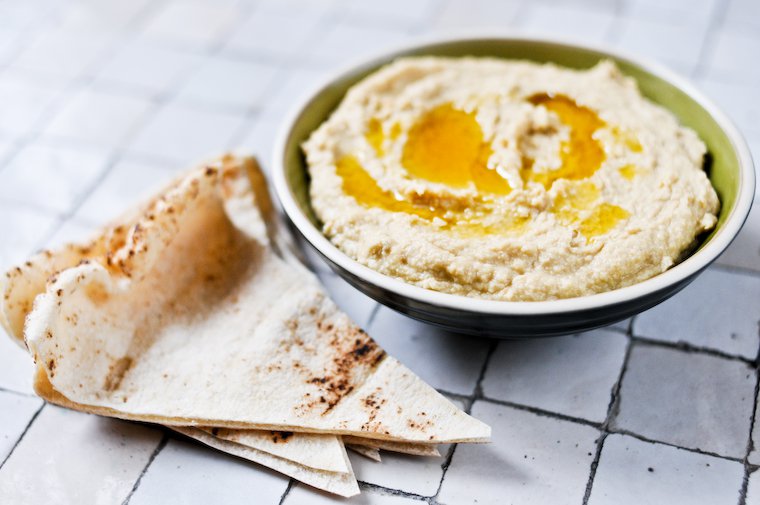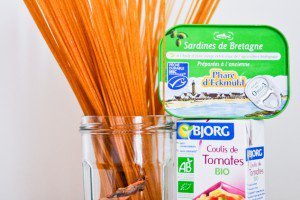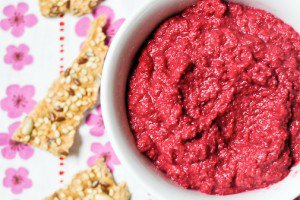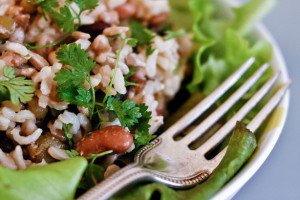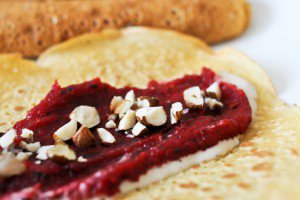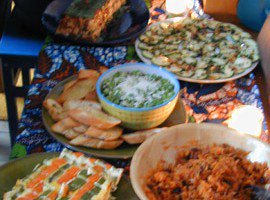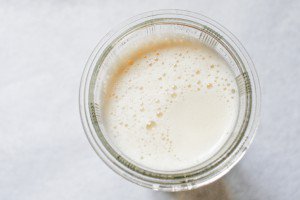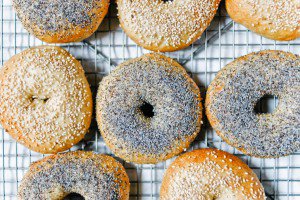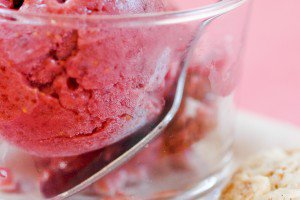I realize the world has not been holding its breath waiting for me to share my recipe for hummus.
But it does seem like the world, or at least a portion of its inhabitants, could use a friendly reminder about homemade hummus: how good it is, how easy, and how cheap, too.
Just out of curiosity, I’ve calculated the approximate cost of my hummus, which I make from dried chickpeas, and with organic ingredients, and I’ve worked out that it costs me under 2€ to produce the generous batch below. I’m not counting my time (maybe fifteen minutes of active work all in all), nor the electricity needed to cook the chickpeas on the stove and purée the hummus in the blender, but it adds up to roughly 3€/kg ($2/lb).
If you consume as much hummus as Natalie Portman and I do, it is worth calculating what that delicious habit is costing you.
Now, if you buy it at the supermarket, where it is most definitely not organic and a few non-pantry items creep uninvited into the ingredients list, it costs 13.50€/kg ($9/lb). And if you were to get it fresh from the Middle-Eastern deli in my neighborhood, because you have friends coming over for the apéro and you happen to be walking past the shop, you may pay up to — insert gasp here — 18.70€/kg ($12.50/lb). That’s over six times what it costs to make your own.
Your mileage may vary, and perhaps you live near a provider who sells an excellent hummus for less than that, but if you consume as much hummus as Natalie and I do, it is worth calculating what that delicious habit is costing you.
Naturally, the obstacle for most would-be hummus makers is the pre-soaking of the dried chickpeas, the long cooking time of legumes, yada yada yada.
To that I say: pshaw. 1- Just a few hours’ soaking is enough for chickpeas — I sometimes go as low as five or six and that’s plenty; 2- consider getting a pressure cooker and slash down the cooking time significantly; and 3- cooked chickpeas freeze perfectly, especially if they’re intended for puréed preparations such as this one, so make a double or triple batch and store the extra in the freezer for hummus-in-a-pinch later.
I’ve read here and there that some cooks peel their chickpeas for hummus, as in disrobe every single cooked chickpea from its translucent outer skin. This is a testament to their angelic meticulosity, I’m sure, and it is said to yield a smoother texture, but it robs you of some of the nutrients and fiber, too, so I’ve never bothered.
To conclude, I will note that I once tried making raw hummus, for which you soak the chickpeas, let them sprout for a few days, and then blend them with the rest of the ingredients as if they were cooked. I did not like it one bit.

Have you tried this? Share your pics on Instagram!
Please tag your pictures with #cnzrecipes. I'll share my favorites!
Ingredients
- 190 grams (1 cup) dried uncooked chickpeas (475 grams when cooked)
- 1 small piece kombu seaweed (optional; this helps make the chickpeas easier to digest)
- 2 cloves garlic
- 1 tablespoon olive oil, plus more for drizzling
- 1 really heaping tablespoon tahini (white sesame butter)
- 2 tablespoons lemon juice
- the leaves from a small bunch of flat-leaf parsley (optional)
- dash hot sauce (optional)
- 3/4 teaspoon salt
- 1 teaspoon ground cumin (use a bit more if it's old)
Instructions
- Six to twelve hours before, put the chickpeas in a medium bowl with plenty of water to cover, and leave to soak. If you find you have been soaking the chickpeas for 12 hours but can't cook them right away for some reason, seek shelter as the skies are about to cave in. (Okay, not really: just drain, rinse, drain again,and place in a container in the fridge until ready to cook, up to a day or so.)
- Drain and rinse the chickpeas. Place them and the kombu in a pressure cooker, cover with cold water by 2 to 3 cm (1 inch), close tightly and set over high heat. When the target pressure is reached, lower the heat to medium and cook for 45 minutes, until the chickpeas are very soft. (See notes.)
- Drain the cooked chickpeas, reserving the cooking water. Discard the kombu.
- Put the drained chickpeas in a blender or food processor with the rest of the ingredients, from garlic to cumin, and 80 ml (1/3 cup) of the cooking water. Process for several minutes until very smooth; this works best when the chickpeas are still relatively warm. Add more cooking water as needed to get a creamy consistency. The hummus will thicken when chilled, so err on the side of thin.
- Taste and adjust the flavor to suit your taste, adding more lemon juice, or tahini, or salt, or hot sauce, or cumin.
- Cover and refrigerate. The flavor will have deepened the next day.
- Transfer to a serving bowl, drizzle with a good olive oil, and serve with pita triangles, carrot sticks and/or slices of black radish.
Notes
- You can also simmer the chickpeas in a regular pot with a lid, checking the water level and adding more when it runs low. It will take about 1 hour and 30 minutes from the moment the water simmers.
- I always cook a double or triple amount of chickpeas, and freeze the excess in one or two containers (with some of the cooking liquids to keep them moist) for a quick batch of hummus on a later date.


